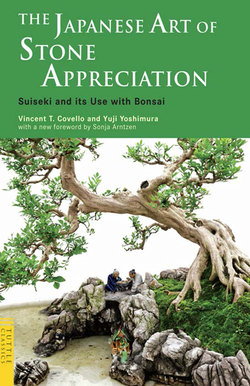Читать книгу Japanese Art of Stone Appreciation - Vincent T. Covello - Страница 11
На сайте Литреса книга снята с продажи.
ОглавлениеCHAPTER 3
Classification of Suiseki
Japanese collectors have traditionally used several systems to classify suiseki, including classification by shape, color, surface patterns, and place of origin. These are described below. For all major categories, the Japanese name is given in parentheses, followed by the term ishi or seki. Both of these terms mean “stone” or “stones” in Japanese. The Japanese name for a particular stone may also include the word gata, which is a general term meaning “shape” or “shaped.”
CLASSIFICATION BY SHAPE
The most commonly used classification system divides suiseki into two major subclassifications, Scenic landscape stones and Object stones, according to the shape of the stone. Each subclassification is subdivided into further categories. Occasionally, a highly suggestive suiseki will fit into more than one category. In such cases the collector will classify the suiseki in the category that most clearly represents the shape of the stone.
Scenic landscape stones (Sansui kei-seki/Sansui keijo-seki)
Many collectors consider Scenic landscape stones to be the principal form of suiseki. Moreover, some collectors believe that the word suiseki may be a shortened form of sansui kei-seki (lit.: san, mountain; sui, water; kei, scenery; seki, stone). Under this heading there are twelve traditional categories.
Fig 9. Distant mountain stone suggesting a snow-capped mountain. Height: approx. 7 inches (18 cm.). Place of origin: United States (California).
